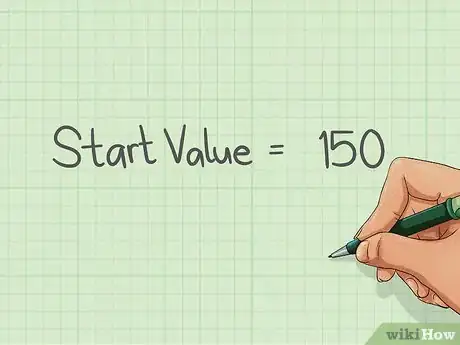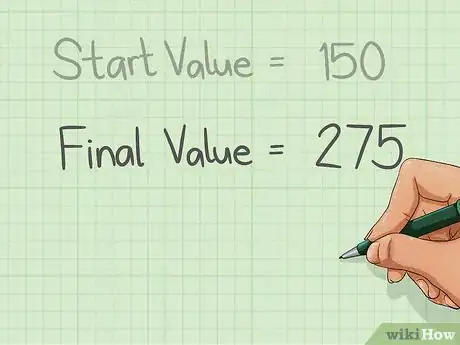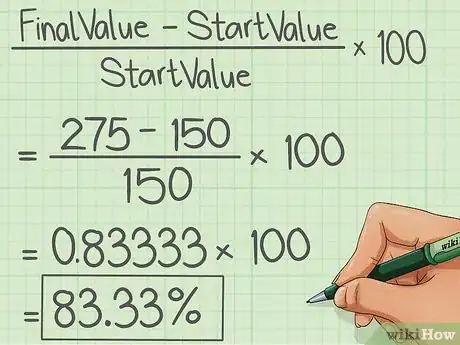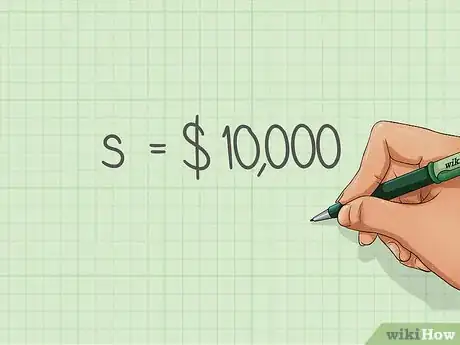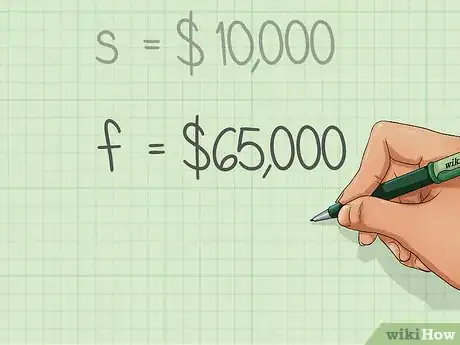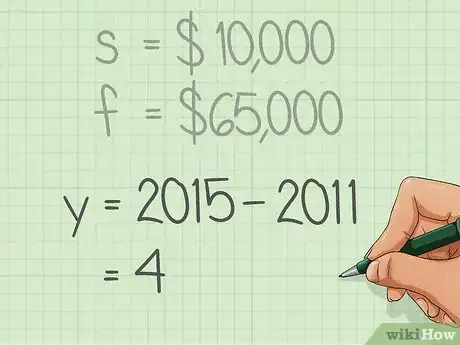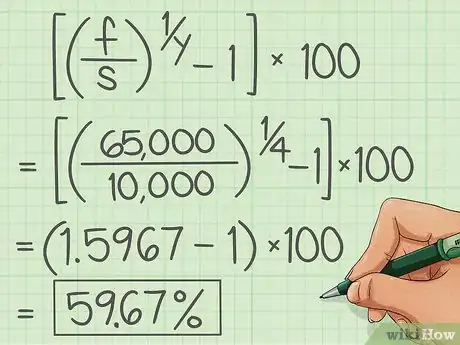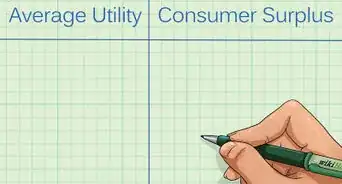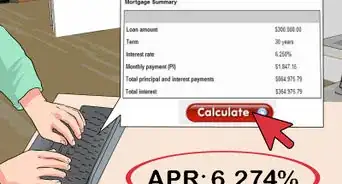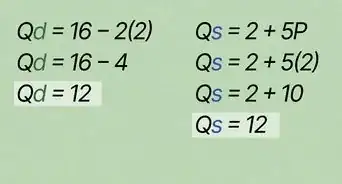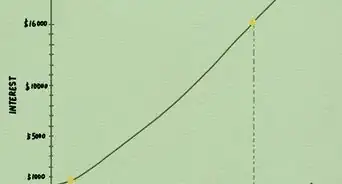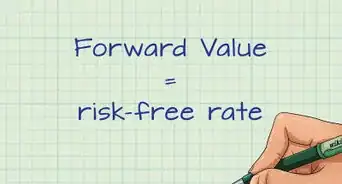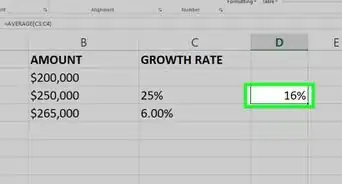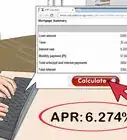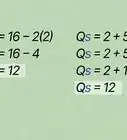This article was co-authored by Michael R. Lewis. Michael R. Lewis is a retired corporate executive, entrepreneur, and investment advisor in Texas. He has over 40 years of experience in business and finance, including as a Vice President for Blue Cross Blue Shield of Texas. He has a BBA in Industrial Management from the University of Texas at Austin.
This article has been viewed 1,135,152 times.
Annual percentage growth rates are useful when considering investment opportunities[1] . Municipalities, schools and other groups also use the annual growth rate of populations to predict needs for buildings, services, etc. As important and useful as these statistics are, it is not difficult to calculate annual percentage growth rates.
Steps
Calculating Growth Over One Year
-
1Get the starting value. To calculate the growth rate, you're going to need the starting value. The starting value is the population, revenue, or whatever metric you're considering at the beginning of the year.
- For example, if a village started the year with a population of 150, then the starting value is 150.
-
2Get the final value. To calculate the growth, you'll not only need the starting value, you'll also need the final value.[2] That value is the population, revenue, or whatever metric you're considering at the end of the year.
- For example, if a village ended the year with a population of 275, then the final value is 275.
Advertisement -
3Calculate the growth rate over one year. The growth is calculated with the following formula: Growth Percentage Over One Year = [3]
- Example Problem. A village grows from 150 people at the start of the year to 275 people at the end of the year. Calculate its growth percentage this year as follows:
- Growth Percentage
- ≈
- =
Calculating Annual Growth over Multiple Years
-
1Get the starting value. To calculate the growth rate, you're going to need the starting value. The starting value is the population, revenue, or whatever metric you're considering at the beginning of the period.
- For example, if the revenue of a company is $10,000 at the beginning of the period, then the starting value is 10,000.
-
2Get the final value. To calculate the annual growth, you'll not only need the starting value, you'll also need the final value. That value is the population, revenue, or whatever metric you're considering at the end of the period.
- For example, if the revenue of a company is $65,000 at the period, then the final value is 65,000.
-
3Determine the number of years. Since you're measuring the growth rate for a series of years, you'll need to know the number of years during the period.[4]
- For example, if you want to measure the annual revenue growth of a company between 2011 and 2015, then the number of years is 2015 - 2011 or 4.
-
4Calculate the annual growth rate. The formula for calculating the annual growth rate is Growth Percentage Over One Year where f is the final value, s is the starting value, and y is the number of years.[5]
- Example Problem: A company earned $10,000 in 2011. That same company earned $65,000 four years later in 2015. What's the annual growth rate?
- Enter the values above into the growth rate formula to find the answer:
- Annual Growth Rate
- ≈
- = 59.67% annual growth
- Note — raising a value a to the exponent is equivalent to taking the bth root of a. You will likely need a calculator with an "" button, or a good online calculator.
References
- ↑ https://www.investopedia.com/terms/a/aagr.asp
- ↑ http://econweb.rutgers.edu/rockoff/growthrate.htm
- ↑ http://pages.uoregon.edu/rgp/PPPM613/class8a.htm
- ↑ https://pages.uoregon.edu/rgp/PPPM613/class8a.htm
- ↑ http://www.investopedia.com/ask/answers/071014/what-formula-calculating-compound-annual-growth-rate-cagr-excel.asp
About This Article
To calculate an annual percentage growth rate over one year, subtract the starting value from the final value, then divide by the starting value. Multiply this result by 100 to get your growth rate displayed as a percentage. Keep reading to learn how to calculate annual growth over multiple years!
